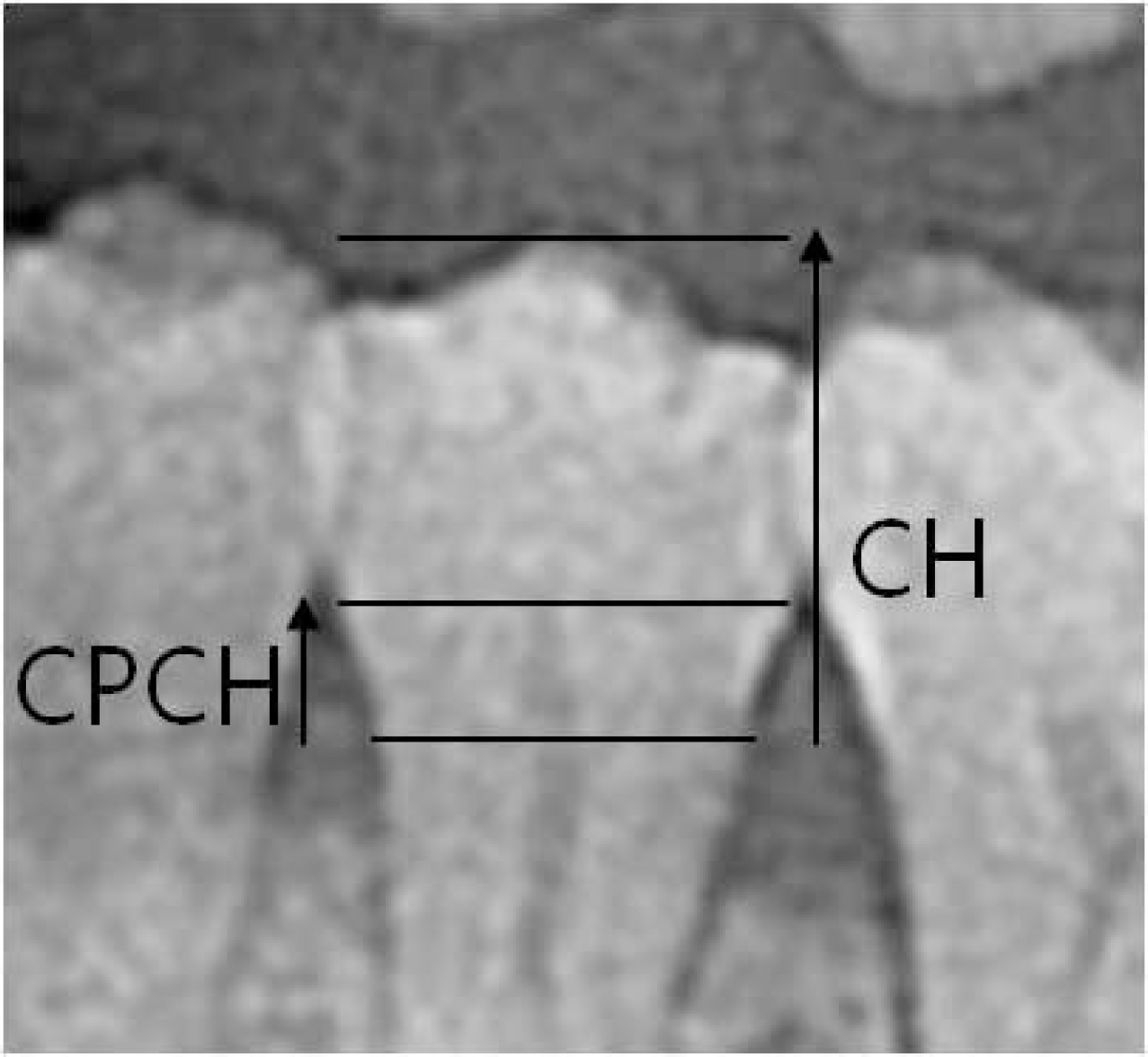Abstract
Estimation of an individual's age has received considerable attention in forensic science. Several methods have been described, and abundant results have been obtained and evaluated. Among the numerous methods for dental age prediction in adults, the progressive diminution of the coronal pulp cavity and dental attrition have been primarily used. Although the reliability of age estimation methods using teeth has been demonstrated, correlation between methods has not been reported. Therefore, the aim of this study was to evaluate concurrence between Drusini's methods. We reanalyzed the age of 107 patients (64 male, 43 female) using Drusini's method. The ages had been previously estimated as ranging from 24 to 69 years using Takei's method. Our results revealed a strong correlation between the two methods (r=0.762) and suggest both methods to be suitable for application in Korean individuals younger than 50 years old. A previous study has shown Takei's and Drusini's methods to be reliable for forensic purposes. The strong correlation between the two methods in the present study suggests that it would be reasonable to use the most appropriate method for age estimation dependent on oral state.
REFERENCES
1. Kanchan T, Menezes RG, Moudgil R, et al. Stature estimation from foot dimensions. Forensic Sci Int. 2008; 179:241.

2. Bosmans N, Ann P, Aly M, et al. The application of Kvaal's dental age calculation technique on panoramic dental radiographs. Forensic Sci Int. 2005; 153:208–12.

3. Kim YK, Shin KB, Ko MY. Forensic odontology. 7th ed.Seoul: Shinhung International Publishing, Inc.;2007. p. 162–82.
4. Rai B, Anand SC. Tooth developments: an accuracy of age estimation of radiographic methods. World J Med Sci. 2006; 1:130–2.
5. Takei T. Age estimation from dental attrition and state of dental treatment: by application of the theory of quantification type I. J Nihon Univ Sch Dent. 1984; 26:119–32.

6. Morse DR. Age-related changes of the dental pulp complex and their relationship to systemic aging. Oral Surg Oral Med Oral Pathol. 1991; 72:721–45.

7. Drusini AG, Toso O, Ranzato C. The coronal pulp cavity index: a biomarker for age determination in human adults. Am J Phys Anthropol. 1997; 103:353–63.

8. Ikeda N, Umetsu K, Kashimura S, et al. Estimation of age from teeth with their soft X-ray findings. Nihon Hoigaku Zasshi. 1985; 39:244–50.
9. Kwon C, Byun JS, Jung JK, et al. An analysis of age estimation cases in Korea from the view of social aspects. Korean J Oral Med. 2013; 38:235–46.

10. Igbigbi PS, Nyirenda SK. Age estimation of Malawian adults from dental radiographs. West Afr J Med. 2005; 24:329–33.

11. Kvaal SI, Kolltveit KM, Thomsen IO, et al. Age estimation of adults from dental radiographs. Forensic Sci Int. 1995; 74:175–85.

12. Gustafson G. Age determination on teeth. J Am Dent Assoc. 1950; 41:45–54.
13. Bang G, Ramm E. Determination of age in humans from root dentin transparency. Acta Odontol Scand. 1970; 28:3–35.

14. Drusini A, Calliari I, Volpe A. Root dentine transparency: age determination of human teeth using computerized densitometric analysis. Am J Phys Anthropol. 1991; 85:25–30.

15. Bodecker CF. A consideration of some of the changes in the teeth from young to old age. Dent Cosm. 1925; 67:543–9.
16. Solheim T. Amount of secondary dentin as an indicator of age. Scand J Dent Res. 1992; 100:193–9.

17. Ito S. Age estimation based on tooth crowns. Int J Forensic Dent. 1975; 3:9–14.
18. Paewinsky E, Pfeiffer H, Brinkmann B. Quantification of secondary dentine formation from orthopantomograms: a contribution to forensic age estimation methods in adults. Int J Legal Med. 2005; 119:27–30.
19. Jeon HS, Tea IH, Ko MY, et al. Age estimation by dental radiographs in Korean adults. Korean J Oral Med. 2009; 34:179–88.
20. Prince DA, Ubelaker DH. Application of Lamendin’ s adult dental aging technique to a diverse skeletal sample. J Forensic Sci. 2002; 47:107–16.
Fig. 1.
Measurement of coronal height (CH) and coronal pulp cavity height (CPCH) performed on radiograph using Adobe Photoshop CS5 program.

Table 1.
Distribution of study samples according to age and gender
| Age group (yr) | Male | Female | Total |
|---|---|---|---|
| 21-30 | 0 | 3 | 3 |
| 31-40 | 2 | 6 | 8 |
| 41-50 | 17 | 10 | 27 |
| 51-60 | 27 | 14 | 41 |
| 61-70 | 18 | 10 | 28 |
| Total (%) | 64 (59.81) | 43 (40.19) | 107 (100) |
Table 2.
Correlation of Takei's and Drusini's methods for males and females by Karl Pearson's correlation coefficients technique
| Sex | Correlation coefficient (r-value) |
|---|---|
| Male | 0.766∗ |
| Female | 0.747∗ |
| Total | 0.762∗ |
Table 3.
Correlation of Takei's and Drusini's methods for tooth types by Karl Pearson's correlation coefficients technique
| Tooth type | Correlation coefficient (r-value) |
|---|---|
| 1st premolar | 0.760∗ |
| 2nd premolar | 0.752∗ |
| Total | 0.762∗ |




 PDF
PDF ePub
ePub Citation
Citation Print
Print


 XML Download
XML Download